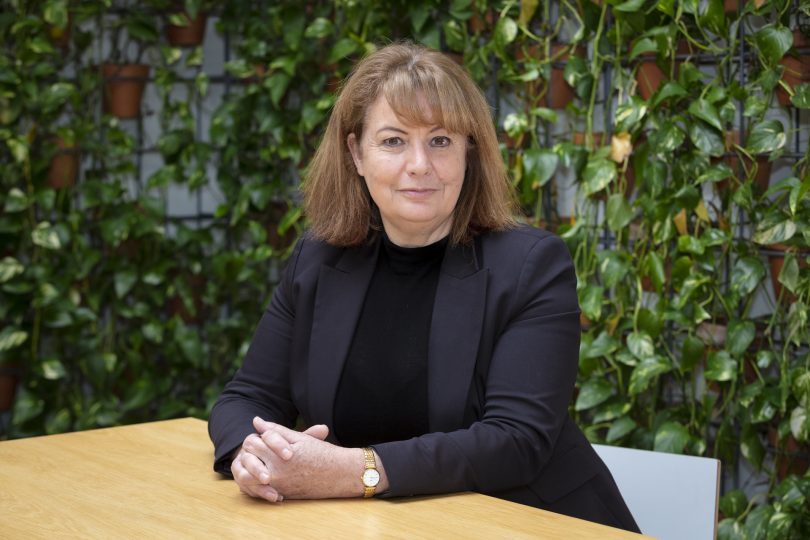
Project Independence CEO Dianne O’Hara. Photo: Thomas Lucraft.
Recently celebrating 10 years since inception, a milestone for any organisation, Project Independence has a new CEO to usher the organisation into its next decade.
It is her first role in the community sector but Dianne O’Hara comes to Project Independence with a wealth of experience. She brings to the organisation business development skills and experience working with government and regulatory bodies, having held senior roles in TransACT, ActewAGL and more recently as CEO of the ACT Law Society.
Project Independence general manager Natalie McConachie remains with the organisation as its fundraising manager.
“This is certainly a new direction for me, but I am enjoying the huge learning curve,” says Dianne. “When the Project Independence role came up, I saw an organisation that has good bones, a great board and good staff, the timing was right, and I was ready for this new challenge.”
Project Independence was formally established in 2013, two years after Canberra businessman Glenn Keys saw the potential for independent housing units that residents could own rather than rent.
READ ALSO: CatholicCare and Marymead to join forces
The social housing model provides a place for people with an intellectual disability to grow their independence, both financially and socially, with guidance and support while living within a sustainable, safe and caring community.
Under the Project Independence model, rather than pay rent, participants pay for a share of the equity in their unit as a step towards independently living in their own property.
Project Independence is effectively a stepping stone to home ownership. Residents pay an initial deposit and when that proceeds to an offer, residents move in for a 12 month ‘try before you buy’ before being offered a permanent place.
Project Independence takes a proportion of their disability support pension as payment on equity against an interest-free loan.
“It is 10 years since inception, but nothing stays as an idea with Glenn,” says Dianne.
“Modelling in the early years has seen Project independence grow to a company backed by rigorous reporting and financial planning, and testing of the model while always remaining conscious that these are people’s lives and homes.
“We are very confident in the model.”
Dianne says the next stage for Project Independence is via the interest it is generating “in all sorts of places.”
Slightly adapted, Dianne says the model could be repurposed to cater for older women with little or no super, and families escaping family violence. There is also some interest from veterans’ groups.
“The next 10 years will be about accelerating growth throughout Australia,” she says.
“Project Independence is a pathway to independent living that effectively builds equity. That is what makes the model distinctive – worldwide there is nothing like it.
“Project Independence offers home ownership rather than a lifetime of renting.
There is currently a long waitlist for places to live in Canberra.
READ MORE: Project Independence proves ROI to government with new KPMG report
“People who come in are welcome to stay until they are ready to move out on their own,” says Dianne. “No-one is forced to leave if they are not ready.”
A new development in Phillip is due to commence at the end of 2021, and it will be home to another 10 people.
Dianne says the organisation is also in discussions with Canberra property developers about incorporating Project Independence model homes into larger developments in the ACT.
“The great thing about the Project Independence model is that it can be adapted to fit so many needs and situations.”
For more information, visit Project Independence.
Original Article published by Karyn Starmer on The RiotACT.


What's Your Opinion?